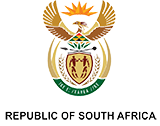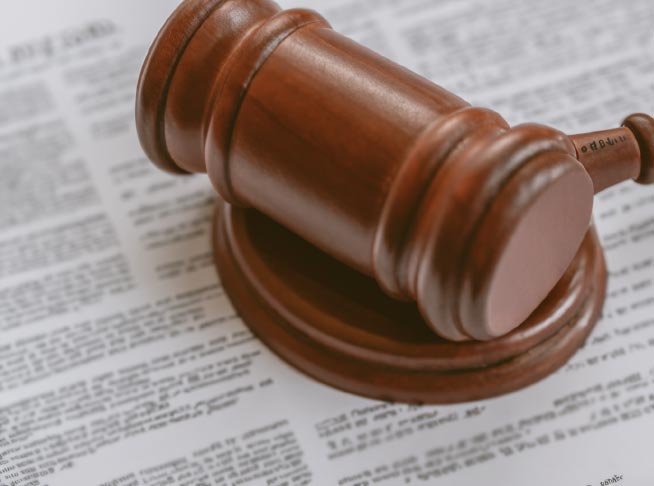Lorem ipsum, dolor sit amet consectetur adipisicing elit tenetur iste voluptas eveniet nulla nisi eum expedita molestias.
State Capture Commission of Inquiry frequently asked questions
-
What was the State Capture Commission?
The Commission was a Commission of Inquiry appointed by the President to investigate state capture in South Africa.
-
Why was the Commission established?
In October 2016 former Public Protector Thuli Madonsela published a report called State of Capture, responding to a series of complaints alleging that the Gupta family had essentially ‘captured’ the South African state. Madonsela’s report found that allegations of corruption, irregularity and personal enrichment were widespread and ran deep. However, she did not have the time or resources to conduct a full investigation. She therefore recommended that a judicial commission of inquiry be appointed headed by a judge selected by the Chief Justice. Following a judgment of the North Gauteng High Court, it was found that the remedial action of the Public Protector was binding, President Zuma appointed the Judicial Commission of Inquiry into Allegations of State Capture, Corruption and Fraud in the Public Sector including Organs of State in January 2018. Judge Raymond Zondo, who was Deputy Chief Justice at the time, was appointed to chair the Commission.
Read More +
-
What was the Commission’s mandate?
The Commission’s terms of reference were ‘to investigate matters of public and national interest concerning allegations of state capture, corruption and fraud’. The Terms of Reference are concerned predominantly with the practices of executive members of the state (that is, senior politicians tasked with having authority over the running of the government, such as the president, cabinet and equivalent at provincial level), and the nature of their relationships with private individuals, including the Gupta enterprise.
Read More +
-
What powers did the Commission have?
The Commission was constituted in terms of the Commissions Act and had the power to enter and search any premises. It could also compel anyone to testify and demand that documents be handed over to it.
The Commission was not a substitute for criminal investigation and prosecution or civil litigation. The Commission made a number of recommendations for criminal investigation and prosecution but law enforcement was not obliged to wait for the Commission to complete its work before taking up matters which aired at the Commission.
-
How did the Commission go about its work?
The Commission conducted formal hearings on more than 400 days during which over 300 witnesses testified. The official transcribed record of the hearings comprises of 75,099 pages.
A total of 3,171 formal summonses were issued in terms of which persons were compelled to provide the Commission with affidavits, documents or other records.
A total of 1,731,106 pages of documentary evidence was prepared and presented to the Commission. Not all of the evidence gathered was formally presented to the Commission. The total amount of evidence that is available digitally reportedly amounts to a petabyte of data. This is the equivalent of 1 million gigabytes.
The evidence gathered implicated approximately 1,438 persons. All the hearings were televised and livestreamed for the public to see; transcripts of each hearing were uploaded to the Commission’s website the following next day.
Read More +
-
How long did the Commission sit?
The Commission held its first public hearing on 20 August 2018. After four years and 278 witnesses, Judge Raymond Zondo formally handed the first part of the report of to President Cyril Ramaphosa on 4 January 2022. Part two was handed over on 1 February 2022, part three on 1 March 2022 and part four on 29 April 2022. The fifth and sixth reports were handed to the President on 22 June 2022.
-
What did the Commission find and what kind of reports did the Commission issue?
The Commission found that state capture did take place in South Africa ‘on an extensive scale.’ Its six reports provide detailed insight into how state capture was organised and facilitated by some leaders in both the public and private sectors.
The Commission recommended that specific persons should be criminally charged, investigated further or subject to other sanctions. It also set-out important systemic recommendations for reform aimed at enhancing and changing South Africa’s anti-corruption landscape so that the state can never again be captured.
Part 1 has three volumes with the first volume focused on corruption within South African Airways, the second on findings relating to the Gupta family, and the third on the South African Revenue Service and recommendations to reform the government procurement system.
Part 2 contained findings on corruption and maladministration within Denel, Eskom and Transnet.
Part 3 focused on findings relating to corruption relating to the state contractor BOSASA.
Part 4 focused on the attempted capture of the National Treasury, corruption between the private technology service provider EOH and the City of Johannesburg, corruption within state diamond mining company Alexkor, the Free State asbestos removal and public housing projects, and the capture of Eskom.
Part 5 focuses on the State Security Agency, Crime Intelligence in the South African Police Service, the state owned national broadcaster the South African Broadcasting Corporation, the state owned Passenger Rail Agency of South Africa; and the so-called Waterkloof saga in which about 200 guests of the Gupta family landed at the Waterkloof Air Force base in 2013.
Part 6 contains a summary of all the commission’s recommendations. It also deals with President Ramaphosa’s evidence before the commission, the role of the ruling party and parliamentary oversight, the Vrede Dairy project, the closure of Gupta companies’ bank accounts, public funds diverted to the Gupta enterprise through state capture, the dissipation of state capture funds through laundering networks and the acquisition of the Optimum Coal Mine.
Read More +
-
How did the Commission define ‘state capture’?
The Commission’s terms of reference did not define state capture. There is also no formal definition of State Capture in the South African legal framework. The Commission found that:
‘State capture in the South African context evolved as a project by which a relatively small group of actors, together with their network of collaborators inside and outside of the state, conspired systematically (criminally and in defiance of the Constitution) to redirect resources from the state for their own gain.
‘This was facilitated by a deliberate effort to exploit or weaken key state institutions and public entities, but also including law enforcement institutions and the intelligence services. To a large extent this occurred through strategic appointments and dismissals at public entities and a reorganisation of procurement processes.
‘The process involved the undermining of oversight mechanisms, and the manipulation of the public narrative in favour of those who sought to capture the state.
‘Moreover, the subversion of the democratic process which the process of state capture entailed was not simply about extracting resources but was further geared towards securing future power and consequently shaping and gaining control of the political order (or significant parts of that order) in a manner that was necessarily opaque and intrinsically unconstitutional.’
Read More +
-
Was the private sector scrutinised by the Commission?
Yes, the Commission found that many companies, including prominent international firms, were willing to enter into kickback agreements to secure lucrative contracts. Auditors, bankers, lawyers and consultants were also implicated. Some of these companies failed to conduct proper due diligence, while others were actively complicit in capturing the state for their private benefit.
-
How much money did the Commission find was involved in state capture?
The total loss to the state as a result of state capture is difficult to quantify and Minister Gordhan testified at the commission that the total economic impact of state capture could be as much as R500 billion. However, the Commission estimated the total amount of money spent by the state which was ‘tainted’ by state capture to be around R57 billion. More than 97% of the R57 billion came from Transnet and Eskom. Out of these funds, the Commission estimated that the Gupta enterprise received at least R15 billion.
-
How much did the Commission cost?
The Commission cost South Africa almost R1 billion.
-
What happens to the Commission’s reports?
The Commission’s reports and their findings and recommendations are not binding. The government may accept, reject or modify recommendations made as part of its functions in setting policy, making laws and running the country.
The President submitted his response to the Commission’s recommendations to Parliament in October 2022.
In November 2022 Parliament began its formal and substantial processing of the Commission’s report. The National Assembly Rules Committee convened and adopted a 31-page Implementation Plan to deal with the Commission’s recommendations. According to the plan, recommendations would be forwarded to the appropriate portfolio committees of the National Assembly and the National Council of Provinces while proposed constitutional changes would be referred to the Joint Constitutional Review Committee.
Read More +


 Search actions and progress by recommendation type
Search actions and progress by recommendation type
 View actions and progress by responsible department
View actions and progress by responsible department
 View anti-corruption legislation and reports
View anti-corruption legislation and reports